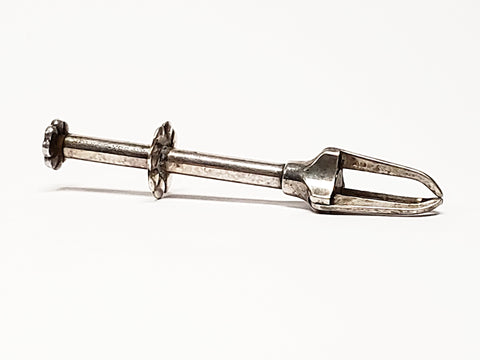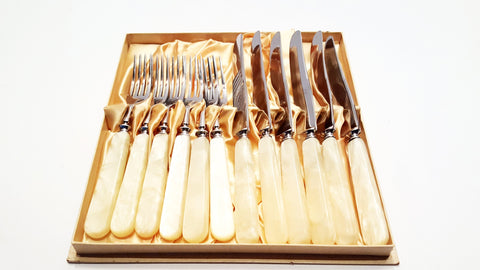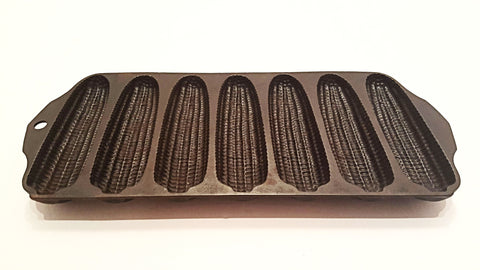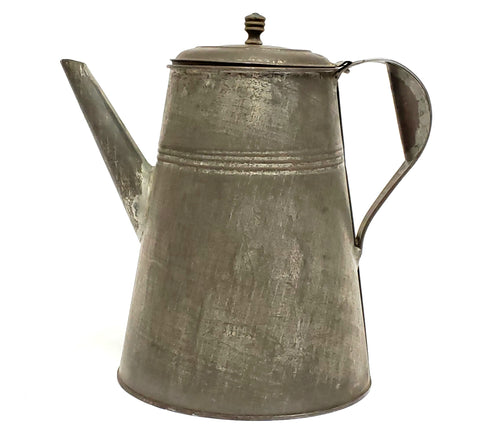Antique Ice Cream Scoops Dippers "Clad's Disher" 1st Mechanical Ice Cream Dishers Set of 2 c. Late 1800's
Product Description: The first ice cream scoop was patented in 1878, by George William Clewell of Reading, PA. This pair of early conical ice cream scoops were the first design to dispense ice cream from one single utensil using two hands. Measuring 7 3/8” long, they feature a cone shape scoop with an open-heart turn-key at the top which turns the two scrapers on the inside to dislodge the ice cream. “Clad’s Disher” is incised on one scraper. A wonderful, early ice cream parlor collectibles!
Patent Date: 1878
Circa: 1880-1900
Product Dimensions:
Overall Length: 7 3/8"
Handle Length: 4 5/8"
Overall Height: 3 3/8" (to top of heart)
Diameter Scoop Opening: 2 5/8"
Product Weight: 4.0 ounces
Material: Metals
Maker: Valentine Clad, tinsmith, Philadelphia, PA
Patented by: G. Wlliam Clewell
Markings/Signatures: “Clad’s Disher” incised inside one scraper.
Color: Gray
Origin: U.S.A.
Condition: Previously owned used. Condition is consistent with age and use. No dents or breaks. Aged patina on surface of both. Heart key-turn works well, although somewhat tight due to surface patina. The scoop with the "Clad's Disher" incision does not sit flush on service and has a small break on the lip (as shown). Other scoop, with no visible signatures or markings sits perfectly on flat surface.
Shipping:
Free Shipping
Usually ships within one business day
Ships only to the 48 contiguous states
DISCLAIMER: Every attempt is made to research thoroughly, take clear photos and accurately describe each product being sold on this website. Most product is acquired from auctions and estate sales. Prior to being offered, all product is carefully examined. With this said, any chips, cracks, repairs or modifications known will be disclosed. Not being experts on the product being sold, the buyer is responsible for carefully examining the photos, description, determining the value, and authenticity of the product. Any manufacture’s names, numbers, symbols or description is to be used for reference purposes only and does not imply that there is any representation of those items.

















